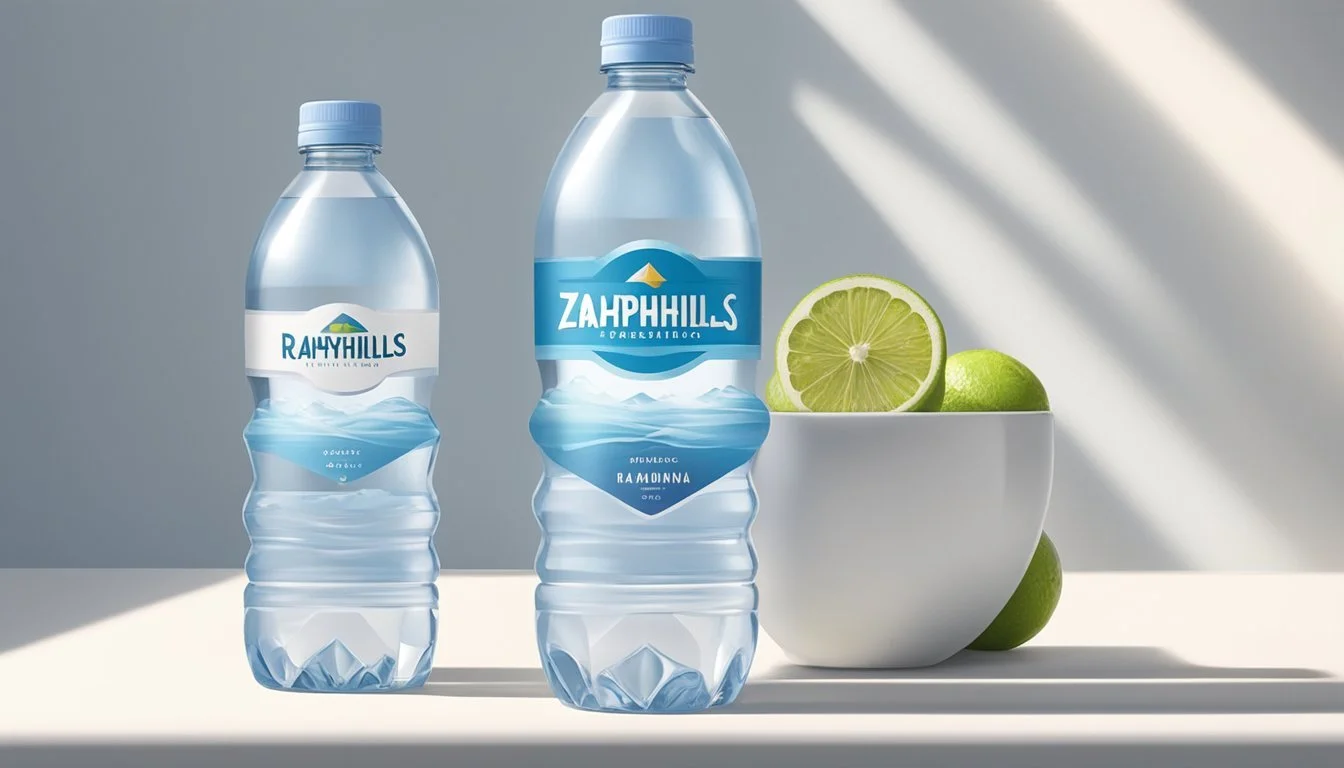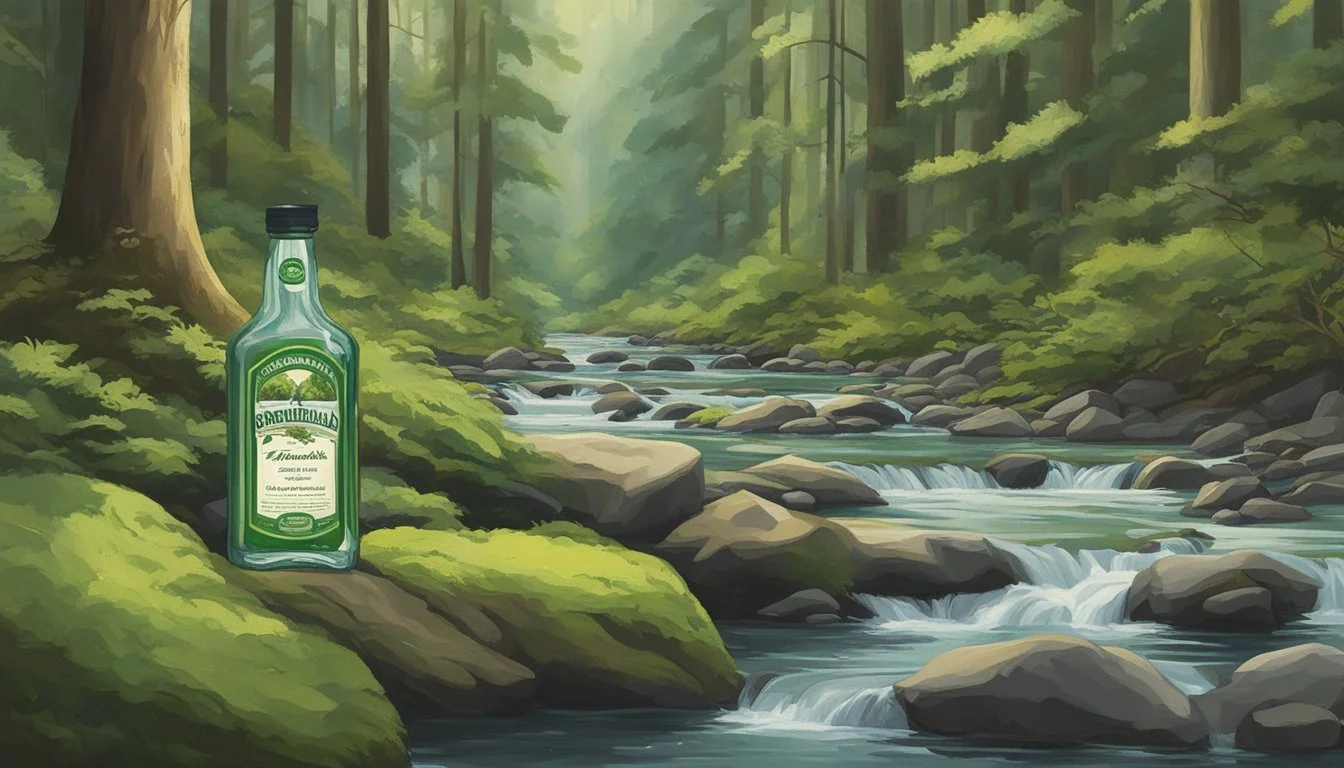Zephyrhills vs. Ramona
Comparing Quality and Taste
Choosing the right bottled water can make a noticeable difference in hydration and overall health. Zephyrhills and Ramona are two popular choices among consumers, each offering unique attributes. When comparing Zephyrhills to Ramona, many find Zephyrhills to stand out due to its crisp, clean taste derived from natural springs.
Zephyrhills offers a refreshing flavor that appeals to many, attributed to its origin from Floridian natural springs. On the contrary, Ramona, though less known, provides pure and reliable hydration with its own set of loyal followers. The decision between the two often boils down to personal preference in taste and access to natural spring versus purified water.
For those concerned about environmental impact, it's important to note that both brands make concerted efforts in sustainability. Zephyrhills, part of the Nestlé Waters family, emphasizes eco-friendly practices, while Ramona upholds similar commitments. This makes either brand a solid choice for environmentally conscious consumers.
Understanding Bottled Water
When choosing bottled water, it's important to know the basics, the different types available, and the regulations that ensure safety and quality. Key differences lie in the sources, treatment methods, and mineral content.
The Basics of Bottled Water
Bottled water is packaged drinking water available in various forms like purified, spring, or mineral water.
Purified water includes types such as distilled or deionized, meets strict standards for contaminants and purity. Spring water comes from underground sources and must be collected at the spring or through a borehole tapping the underground formation.
Minerals are often added or retained in different types of bottled water to enhance taste and health benefits.
Various treatment methods ensure safety and improve taste, including filtration, reverse osmosis, and ozonation.
Types of Bottled Water
There are several types of bottled water, each with unique characteristics:
Purified Water: Highly treated to remove contaminants and impurities, often through processes such as reverse osmosis or distillation.
Spring Water: Sourced from natural springs, this type retains original mineral content, providing a fresh taste.
Mineral Water: Contains naturally occurring minerals, collected directly at the source, and offers potential health benefits.
Sparkling Water: Carbonated water which can be spring or purified, known for its fizzy texture.
Each type serves different preferences and needs, ranging from everyday hydration to dietary supplements of important minerals.
Regulations and Standards
Bottled water is regulated to ensure it meets safety and quality requirements.
In the U.S., the FDA oversees bottled water as a packaged food product, and ensures compliance with standards for contaminants and labeling. EPA standards apply for tap water but influence bottled water regulations indirectly, ensuring all sources meet specific quality metrics.
FDA regulations demand regular testing, specific labeling, and adherence to Good Manufacturing Practices (GMPs). Standards include limits for microorganisms, chemicals, and other potential contaminants to ensure public safety.
Brand Profiles
Zephyrhills and Ramona are distinct brands in the bottled water market, each with unique characteristics in terms of source, processing, and product composition. This section provides a detailed comparison of their profiles.
Zephyrhills: Pure Florida Spring Water
Zephyrhills is a renowned brand that sources its water from natural springs located in Florida. The water from these springs is rich in minerals, providing a balanced taste and beneficial electrolytes.
Zephyrhills' consistent pH level, typically around 7.0 to 7.6, makes it a healthy hydration choice. Products include various sizes and packaging options, catering to a wide range of consumer needs. The brand emphasizes its commitment to sustainability by utilizing recyclable materials and engaging in environmental conservation efforts.
Ramona: The Purification Process
Ramona offers high-quality purified water through a rigorous filtration process. The water undergoes several stages, including micro-filtration, reverse osmosis, and ultraviolet exposure. These methods ensure the removal of impurities, resulting in water that is 99.9% pure.
Ramona infuses minerals and electrolytes back into the water after purification to enhance its taste and nutritional value. The brand prides itself on transparency, providing detailed information about its processes and water composition to consumers. Its product line includes various packaging formats, aiming to meet diverse consumer preferences.
Health and Hydration
Zephyrhills and Ramona bottled waters both offer unique aspects in terms of mineral content and hydration quality. These factors play crucial roles in their suitability for health.
Mineral Content and Health Benefits
Zephyrhills is natural spring water and contains naturally occurring minerals like magnesium and calcium. These minerals are essential for numerous bodily functions. Magnesium supports nerve function, muscle function, and the immune system. Calcium is vital for bone health and cardiovascular function.
Ramona water often highlights its balanced pH and the presence of essential minerals. The pH balance, typically around 7 to 8, helps maintain the body's internal balance. This can be particularly important for people monitoring their acidity levels.
Both waters contain electrolytes, like potassium and sodium. These electrolytes are important for maintaining fluid balance and proper hydration. The presence of natural minerals in both waters can enhance their taste and make them more appealing to drink regularly.
Hydration Quality
Zephyrhills water has a refreshing taste due to its natural mineral content. This makes it a popular choice for those looking to stay hydrated throughout the day. Hydration quality is not just about taste; it also involves how well the water replenishes the body's fluid levels.
Ramona water, with its balanced pH, is often marketed for people looking to stay hydrated efficiently. A neutral to slightly alkaline pH is beneficial as it aligns closely with the body's natural pH levels. This can aid in better hydration and overall fluid balance.
Both brands offer reliable hydration solutions. The presence of minerals in both Zephyrhills and Ramona waters means they do not just quench thirst but contribute positively to daily nutrient intake.
Taste and Texture
The taste and texture of bottled water can vary greatly depending on its water source and whether it has any added minerals. Natural springs and enhanced waters can each contribute unique qualities to the flavor profile of bottled water.
Water Source Impact on Taste
Zephyrhills and Ramona draw their water from natural springs, which significantly influences their taste. Zephyrhills sources its water from natural springs in Florida. These springs are known for their clean, crisp flavor, attributed to the natural filtration process through sandstone and limestone.
Ramona, on the other hand, sources its water from the pristine mountain springs of Southern California. This area's unique geology imparts a gentle, refreshing taste, making it distinctly different from Zephyrhills. The mineral content in the spring water, such as calcium and magnesium, affects the overall flavor and mouthfeel. Consumers often prefer one brand over the other due to these subtle differences, which may cater to individual taste preferences.
Enhanced Waters and Taste
Enhanced waters, with added minerals, can offer a different taste experience compared to natural spring water. While both Zephyrhills and Ramona primarily offer spring water, some variations may include added minerals to enhance taste. For instance, some consumers appreciate a slightly mineralized flavor, which can make the water taste more robust.
Added minerals often include electrolytes like potassium, sodium, and magnesium. These additions can create a smoother, sometimes richer texture. When it comes to Zephyrhills and Ramona, any enhanced water options would offer a marked difference in taste compared to their natural counterparts. These enhancements can alter the purity and balance of the water, catering to different consumer preferences.
Purity and Safety
When comparing Zephyrhills to Ramona, understanding their purification processes and safety standards is essential. Both brands claim to adhere to strict regulations, but their methods and effectiveness vary.
Filtration and Purification Techniques
Zephyrhills sources its water from Florida springs. It undergoes multiple purification steps, including micro-filtration, ozone disinfection, reverse osmosis, and UV treatment. These methods aim to eliminate contaminants and improve taste. The water retains some minerals, adding potential health benefits.
Ramona, on the other hand, focuses on a combination of reverse osmosis and distillation. Reverse osmosis removes dissolved solids and impurities, while distillation further purifies by boiling and re-condensing the water, effectively removing most contaminants.
Despite these thorough processes, the presence of plastics and other potential pollutants in bottled water remains a concern.
Assessing Contaminants and Safety Standards
Zephyrhills and Ramona must comply with Environmental Protection Agency (EPA) and Food and Drug Administration (FDA) regulations for bottled water. These agencies set limits on contaminants, including microorganisms, chemicals, and metals.
Periodic testing ensures adherence to these standards. Zephyrhills focuses on trace mineral content and balances pH levels as part of their quality control.
Ramona also adheres to stringent safety protocols, ensuring minimal contamination. Both brands display confidence in their ability to meet or exceed regulatory standards.
Nevertheless, the use of plastic bottles can introduce microplastics, which are a growing concern for health and safety. Regular testing and transparency in reporting help reassure consumers regarding the quality of their chosen bottled water.
Environmental and Ethical Considerations
Environmental impact and sustainability are significant factors for consumers choosing between Zephyrhills and Ramona bottled water.
Bottling Materials and Environmental Impact
Zephyrhills primarily uses plastic bottles, which contribute to plastic waste and can harm the environment if not properly recycled. Their bottles are recyclable, but the effectiveness depends on consumer participation and local recycling facilities.
Ramona, on the other hand, offers options in both glass and plastic bottles. Glass is considerably more eco-friendly as it is infinitely recyclable and less likely to contribute to plastic pollution. However, the carbon footprint of glass bottles can be higher due to the energy required for production and transportation, which needs to be considered.
Sustainable Practices in Water Bottling
Zephyrhills implements several sustainable practices in their bottling process. They source their water from Florida's springs and strive to ensure the springs' health by limiting water extraction and implementing conservation measures. They have also committed to lightweighting their bottles to reduce plastic use.
Ramona focuses on sustainable sourcing and bottling as well. They use renewable energy in their production facilities and aim to minimize their overall carbon footprint. Ramona’s commitment to environmental stewardship includes sustainable water management practices to ensure the long-term viability of their sources.
Both brands are actively improving their practices to reduce environmental impact and promote sustainability. They utilize sustainable practices and offer recyclable options, aiming to balance consumer demand with environmental responsibility.
Economic Insights
Examining the economic aspects highlights the cost-effectiveness of bottled water brands and their market dynamics. Both Zephyrhills and Ramona have distinct pricing strategies and market reputations that impact consumer choices.
Cost Analysis of Different Brands
The cost of bottled water varies significantly based on the brand. Zephyrhills, a spring water brand under Nestlé Waters, typically falls in the mid-range price bracket. It offers good value considering the quality of the water sourced from natural springs.
Ramona, while less established, competes on pricing by offering rates slightly lower than its rivals. This strategic pricing aims to attract budget-conscious consumers who might otherwise opt for more recognized brands like Dasani or Aquafina, owned by Coca-Cola and PepsiCo, respectively.
Here’s a rough comparison of approximate prices per bottle:
Brand Price (per 500 ml) Zephyrhills $1.00 Ramona $0.85 Dasani $1.20 Aquafina $1.15
Market Presence and Brand Reputation
Zephyrhills enjoys a robust market presence, especially in regions close to its source in Florida. Its parent company, Nestlé Waters, leverages extensive distribution networks and marketing strength to maintain a significant share of the U.S. market. This widespread availability and branding resonate well with consumers seeking reliable natural spring water.
Conversely, Ramona is a regional player, with a growing market footprint. Its aggressive pricing and effective local marketing campaigns have garnered a favorable reception among budget-conscious buyers. While it may not yet have the same national recognition as Zephyrhills, it’s steadily building a loyal customer base.
Market penetration and brand loyalty are key factors influencing consumer preferences. Larger brands often benefit from strong brand recognition and established trust, while newer brands like Ramona rely on competitive pricing and localized strategies.
Consumer Experience
Zephyrhills and Ramona bottled waters each provide distinct experiences for consumers in terms of availability and packaging. These factors play a crucial role in consumer satisfaction and brand loyalty.
Availability and Convenience
Zephyrhills, sourced from natural springs in Florida, has a widespread presence in grocery stores across the Southeastern United States. Consumers find it readily accessible in various sizes and packaging forms, making it a convenient choice for daily hydration.
Ramona, on the other hand, might not be as widely available in conventional grocery stores. This brand often targets niche markets and specialty stores, which may limit its convenience for some consumers. However, those who frequent these specific outlets might find Ramona readily stocked and easy to purchase.
Packaging and Design Preferences
Zephyrhills bottles emphasize a simple and eco-friendly design, often incorporating recycled materials. The branding focuses on its natural spring water heritage, appealing to environmentally conscious consumers. The clear labels and straightforward design make it easy for shoppers to recognize and trust.
Ramona differentiates itself with unique, eye-catching packaging that often features bold and colorful designs. This modern and artistic approach appeals to a younger demographic seeking visually appealing products. Additionally, Ramona often features limited edition designs, creating a sense of exclusivity and collector's appeal.
Both brands prioritize packaging that meets consumer expectations around aesthetics and practicality, though each approaches this in distinctive ways.
Conclusion
Consumers seeking bottled water often weigh taste, hydration, and quality. Both Zephyrhills and Ramona cater to these needs but through different approaches.
Zephyrhills sources its water from Florida springs. This gives it a unique mineral content, appealing to those looking for a natural taste. Its comprehensive purification process ensures safety and purity.
Ramona offers purified water, which may have a consistent taste due to additional mineral enhancements. This makes it a reliable choice for those who prefer a uniform flavor profile.
When it comes to hydration, both brands excel. Each provides the necessary hydration while maintaining rigorous standards to ensure the highest quality.
Consumer choice often comes down to personal preference. Some may prioritize the natural springs and specific mineral content of Zephyrhills. Others may prefer the uniform taste of Ramona's purified water.
Here’s a brief comparison:
Factor Zephyrhills Ramona Source Florida Springs Purified Water Taste Natural, Mineral-rich Consistent, Enhanced Purification Process Micro-filtration, UV, etc. Demineralization, Added Minerals Hydration Excellent Excellent Preferred For Natural Taste Consistent Flavor
The choice between Zephyrhills and Ramona is subjective, largely dependent on individual preferences in terms of taste and source. Both provide quality hydration options, ensuring consumers have access to premium bottled water.
More About Zephyrhills
Core Hydration vs Zephyrhills: Which Bottled Water is Better?
Icelandic Glacial vs Zephyrhills: Which Bottled Water is Better?
Mountain Valley Spring Water vs Zephyrhills: Which Bottled Water is Better?
Nestle Pure Life vs Zephyrhills: Which Bottled Water is Better?
Poland Spring vs Zephyrhills: Which Bottled Water is Better?
San Pellegrino vs Zephyrhills: Which Bottled Water is Better?
Zephyrhills vs Aqua Carpatica: Which Bottled Water is Better?
Zephyrhills vs Cascade Mountain: Which Bottled Water is Better?
Zephyrhills vs Crystal Geyser: Which Bottled Water is Better?
Zephyrhills vs Hawaii Volcanic: Which Bottled Water is Better?
Zephyrhills vs Hawaiian Springs: Which Bottled Water is Better?
Zephyrhills vs Kirkland Signature: Which Bottled Water is Better?
Zephyrhills vs Purely Sedona: Which Bottled Water is Better?
Zephyrhills vs Richard's Rainwater: Which Bottled Water is Better?
Zephyrhills vs Solan de Cabras: Which Bottled Water is Better?
Zephyrhills vs Talking Rain AQA: Which Bottled Water is Better?
Zephyrhills vs Whole Foods 365: Which Bottled Water is Better?
Zephyrhills vs Whole Foods Italian Still Mineral water: Which Bottled Water is Better?









